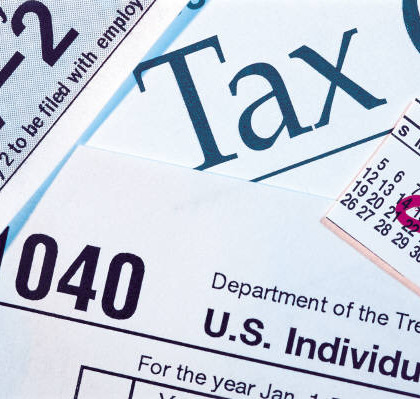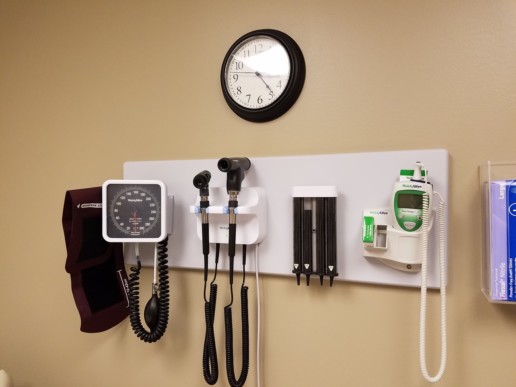New financial benefits give small business employees early wage access
Mandatory quarantines and business closures during the coronavirus pandemic have taken a particularly large financial toll on small businesses, forcing many employers to reduce wages and health coverage.
Sixty-five percent of small businesses said they were either extremely concerned or very concerned about how the coronavirus will affect their business, according to a survey by Freshbooks. In addition to financial pressure, small business employers are also tasked with providing benefits that will support struggling employees.
“COVID-19 just exacerbated what was going on in the market and put even more pressure on small companies and their employees,” says Emily Ritter, head of product marketing at Gusto, a payroll and employee benefits platform for small businesses. “Employees across America are living paycheck-to-paycheck and the stress of that can be expensive for households.”
Gusto has launched a new set of health and financial wellness benefits to provide employees with early access to earned wages, medical bill reimbursement and a savings account.
These financial tools are especially beneficial as healthcare costs drive many employees into debt, Ritter says. According to a Salary Finance survey, 32% of American workers have medical debt, and 28% of those who have an outstanding balance owe $10,000 or more on their bills.
“Financial health and health coverage is so inextricably linked, which has come into the limelight with COVID-19,” Ritter says. “We're seeing that small group health insurance is something that is really important, so if we can help small businesses help their employees with health bills, that's another component of financial health.”
Gusto’s new benefit offering allows employers to contribute to employees’ monthly health insurance costs. Contributions can vary from $100 to amounts that would cover an employee’s entire premium. The contributions are payroll-tax-free for the business and income-tax-free for employees, and employers also have the flexibility to adjust their contribution at any time.
“A large portion of American workers say that they wouldn't be able to handle the financial implications of a large injury or illness, and of course illness is top of mind in the midst of a global pandemic,” Ritter says. “So it was really important for us to show up with these solutions.”
Additionally, Gusto has launched Gusto Cashout, which gives workers early access to earned wages without any fees, helping them avoid having to turn to payday loans, overdraft fees or credit card debt between paychecks. With a new debit card function and cash accounts — which also provide interest — workers can put aside savings straight from their paychecks, helping them better navigate short-term emergencies and unexpected expenses.
Even before coronavirus, less than half of adults living in the U.S. had enough savings to pay for a $1,000 emergency expense, according to a Bankrate.com study, and 50% of employees said they live paycheck to paycheck, a CareerBuilder survey found.
“We're really trying to help people be prepared in those rainy day moments and avoid the debt cycle that happens,” Ritter says. “Because this product is free [for our clients’ employees] and the wages come out of their paycheck on payday, there is no continuous debt cycle that happens with a payday loan.”
Fifty-one percent of Americans feel at least somewhat anxious about their financial situation following the coronavirus outbreak, according to a recent survey from NextAdvisor, and nearly three in 10 Americans’ financial situation (29%) has been negatively impacted since the pandemic began.
Providing employees with financial wellness resources and other support can help small business owners build a more efficient and competitive business, despite the challenges faced during COVID, Ritter says.
“It's a win win for their employees and for their business,” Ritter says. “When employees are more financially stable, they're able to show up more effectively at work.”
SOURCE: Nedlund, E. (13 October 2020) "New financial benefits give small business employees early wage access"(Web Blog Post). Retrieved from https://www.employeebenefitadviser.com/news/new-financial-benefits-give-small-business-employees-early-wage-access
How benefit advisers can hold healthcare plans accountable for their prices
Brokers and consultants already know that much of the growth in health benefit costs is not driven by insurer and TPA rate increases, but rather by the increase in the price and volume of healthcare services. While some of these costs are due to growing survivability rates for serious diseases and therapeutic improvements, much are avoidable, such as expenses associated with unnecessary care and unnecessarily expensive care. Evidence of variability of costs is found in the fact that unit cost and utilization can vary wildly from health system to health system, even within the same market.
Read more: 4 drivers of healthcare costs — and what advisers should do
Just because macro healthcare economics is the primary driver of overall health costs, doesn’t mean that health plans are powerless to control price increases. Even though health plans can and do negotiate rates directly with health systems in their networks, too often they don’t do everything they can to offer exceptional value to their customers. They don’t ask the right questions of health systems, they don’t practice thorough utilization management, and they don’t contract exclusively with providers who focus on high-value care. In other words, they don’t work hard enough to eliminate unnecessary costs or to bring prices down. Instead, they treat them as a given and pass those costs on to their customers.
Too often, benefit advisers take the whole healthcare market as a given, especially due to the popularity of broad preferred provider organization (PPO) networks, which include almost every system in an area. But the reality is that economics vary dramatically from system to system, so employee benefit advisors need to understand local economics in order to effectively evaluate network differences and find value. They can do this by:
- Heavily and skeptically questioning carriers and TPAs to understand their networks and participating providers. Examples of questions to ask include: Tell me your opinion about different health systems in your network? How much do negotiated fees vary for outpatient services, professional services, etc.? Why is a specific expensive provider part of your narrow / high-performance network?
It’s also important to ask when a contract with a specific health system is up and if it will be renegotiated soon, since a new contract could include very different rates from the current one. Note that some of the time, carriers will discuss rates as a function of Medicare, but because Medicare DRG rates can vary dramatically from hospital to hospital, an adviser needs to understand Medicare base rates.
- Analyzing claims. Every adviser has plenty of these available to them, and they should be analyzing those claims to determine which providers are lower cost and which are higher cost. In particular, it’s important to look at outpatient rates, facility rates, and professional rates, by specialty. It’s also important to compare the same diagnosis codes across providers. For example, claims could reveal that a hypothetical Dr. Jones operates on 100 patients out of 100, while a hypothetical Dr. Smith operates on only 50 patients out of 100 with the same condition. To figure out why this discrepancy exists, we would have to dig deeper since some doctors or practices may cater to only high-risk patients. Claim data can help shed light on health plan information that is not typically available to the public as health plan rates are often proprietary but appear on claims.
Taking all of these steps will help benefit advisers achieve something essential: holding health plans accountable for their prices. If a health plan doesn’t aggressively hunt for high value providers and reward them, you should ask why. And if you don’t like their answer, you probably identified a plan that isn’t a good fit for your clients because it doesn’t deliver on what matters most: quality care offered at an affordable price without compromising coverage.
SOURCE: Cohen, A. (04 November 2020) "How benefit advisers can hold healthcare plans accountable for their prices" (Web Blog Post). Retrieved from https://www.employeebenefitadviser.com/opinion/how-benefit-advisers-can-hold-healthcare-plans-accountable-for-their-prices
Employees are stressed caring for aging parents. How can employers help?
As many employees are caring for parents and close relatives, a balancing act on both physical and mental well being has impacted their work productivity. Read this blog post to learn more.
A growing number of employees are caring for aging parents, parents-in-law and relatives while working full time. One report puts the number of employees caring for aging family members at one in six, while other sources put the number even higher — 73% of employees caring for older family members, with 80% of those employees reporting that they struggle to balance their work and caregiving responsibilities.
This balancing act not only has an impact on employees’ physical and mental wellbeing, it also has a significant impact on their employers. But researchers at Harvard Business School found that many employers are not aware of the extent to which caregiving responsibilities are affecting employee performance, productivity and costs.
Support strategies for employee caregivers
Employers can offer several resources and benefits to help reduce the stress and physical and mental health impact on employees who are caring for aging family members. These strategies can also decrease the negative effect that caregiving can have on productivity and costs.
- Flexible schedules and remote work options: Offering flexible schedules and the option to work from home can help employees fit caregiving responsibilities, like taking family members to doctor’s appointments, preparing meals and helping with other activities of daily living into their day with less stress and less missed work time.
- Eldercare information and referral resources: These services can help employees find eldercare in their community, connect with other caregivers for support and advice, and learn about financial, health, legal and housing issues they may face as they provide care for aging family members and plan for the future.
- Self-care resources for caregivers: The stress of caregiving can increase the risk of health problems including heart disease, diabetes, migraine headache, gastrointestinal problems, substance misuse, anxiety and depression. Employers can help employees better manage stress by offering access to free stress management resources including exercise and meditation classes, caregiver support groups and referrals to online and in-person mental health providers.
- Medical second opinions: Managing the healthcare for an aging family member living with complex or serious medical problems such as dementia, cancer and heart failure can be especially difficult, stressful and time-consuming for employees. Access to second opinions can help employees make informed choices about their family member’s care and provide peace of mind about their decisions.
- Specialist guidance and support: Employers can offer access to navigators and advisors who can help employees ensure that their aging family members’ healthcare is coordinated to lower the risk of medical errors, inappropriate care and missed follow-up care. These services can also ensure that their medical records are reviewed and consolidated, which is especially important when people see several physicians. Navigation and advisory services can help employees research medical treatments for their family member, find and connect with experienced specialists and build a plan to address the potential progression of their family member’s health issues. Advisors can also help with appointment scheduling, insurance issues and problems with medical bills, all of which can be exceptionally time-consuming and frustrating tasks.
- Expand telehealth access: By expanding employees’ telehealth benefits to include aging parents and parents-in-law, employers can make it easier for employees to be involved in their family member’s care, even if they don’t live nearby. Telehealth can also make getting care easier for family members because they don’t need to arrange transportation to appointments.
- Subsidize back-up care: Consider providing employees with subsidies to help pay for in-home back-up care for aging family members. With this safety net in place, employers can decrease the number of hours employees are absent from work due to caregiving responsibilities.
SOURCE: Varn, M. (28 October 2020) "Employees are stressed caring for aging parents. How can employers help?" (Web Blog Post). Retrieved from https://www.employeebenefitadviser.com/opinion/employees-are-stressed-caring-for-aging-parents-how-can-employers-help
Offices struggle with COVID-19 social distancing measures
Across the nation, many are beginning, if they have not already, are allowed to work from their offices, instead of having to work remotely. Now, due to the coronavirus pandemic, there are several new protocols that many may struggle to maintain. Read this blog post to learn more.
Millions of workers in recent months have returned to offices outfitted with new pandemic protocols meant to keep them healthy and safe. But temperature checks and plexiglass barriers between desks can't prevent one of the most dangerous workplace behaviors for the spread of COVID-19 — the irresistible desire to mingle.
“If you have people coming into the office, it’s very rare for them consistently to be six feet apart,” said Kanav Dhir, the head of product at VergeSense, a company that has 30,000 object-recognition sensors deployed in office buildings around the world tracking worker whereabouts.
Since the worldwide coronavirus outbreak, the company has found that 60% of interactions among North American workers violate the U.S. Centers for Disease Control and Prevention’s six-foot distancing guidelines, as do an even higher share in Asia, where offices usually are smaller.
Most people who can work at home still are and likely will be until at least mid-2021. But as some white-collar workers begin a cautious return, it’s becoming clear how hard it is to make the workplace safe. A bevy of sophisticated sensors and data are being used to develop detailed plans; even IBM’s vaunted Watson artificial intelligence is weighing in. In many cases the data can only verify what should be evident: The modern office, designed to pack in as many workers as possible, was never meant to enforce social distancing.
To date, the coronavirus has infected more than 8 million Americans and is blamed for 220,000 U.S. deaths. So far, efforts to get large numbers of workers into the office haven’t worked out very well. Some workers at Goldman Sachs Group and JPMorgan Chase tested positive after they returned to work and were sent home. With infection rates rising again nationwide, many companies have told most employees to work from home until next year, or even forever. Michigan’s governor approved new rules last week that bar employers from forcing workers back to the office if they can do their job at home.
For those employers pushing ahead with a return to the office, sensors that measure room occupancy are proving to be a necessity, said Doug Stewart, co-head of digital buildings at the technology unit Cushman & Wakefield, which manages about 785-million-square feet of commercial space in North and South America. Most offices are already fitted with sensors of some kind, even if it’s just a badging system or security cameras. Those lagging on such capabilities are now scrambling to add more, he said.
The systems were used before the pandemic to jam as many people together in the most cost-effective way, not limit workplace crowding or keep employees away from each other, Stewart said. With that in mind, companies can analyze the data all they want, but changing human behavior — we’re social creatures, after all — is harder, he said.
“Just because technology identifies it, and the analytics is flagging it, doesn’t mean the behavior will change,” Stewart said.
Because office crowding can show up in air quality, proper ventilation has replaced comfort as the focus for building managers, said Aaron Lapsley, who directs Cushman’s digital building operations with Stewart. Measuring the amount of carbon dioxide or the concentration of aerial particles can determine if airflow needs to be adjusted — or whether some people need to be told to leave a specific area. Employees are now more likely to use smartphone apps to receive alerts and keep tabs on the health and safety of the building, he said.
Something even as trivial as a trip to the bathroom or coffee machine has to be re-examined, said Mike Sandridge, executive director of client success at the technology unit of Jones Lang LaSalle, which oversees about 5-billion-square feet of property globally. Some restrooms have had to be limited to one person, and a red light will come on to let others know whether it’s occupied, based on stepping on a switch. When it’s free, the light turns green. Companies can also monitor whether the snack area is getting crowded, he said.
To help get some of its 350,000 employees back to its 150 offices around the world, International Business Machines is using its problem-solving Watson AI to analyze data from WiFi usage to help design and adjust office occupancy, said Joanne Wright, vice president of enterprise operations.
Understanding worker habits is more useful if you have a way to nudge them into new patterns. Since the pandemic began, Radiant RFID has sold 10,000 wristbands that vibrate when co-workers are too close to each other. The technology was originally designed to warn workers away from dangerous machinery, not other people. So far, the wristbands are responsible for reducing unsafe contacts by about 65%, said Kenneth Ratton, chief executive of the company, which makes radio-communication devices. At this point, the data on more than 3 billion encounters shows the average worker has had about 300 interactions closer than six feet lasting 10 minutes or more.
“The biggest problem is we as Americans haven't really been socially distanced, ever,” Ratton said.
Nadia Diwas is using another kind of technology: a wireless key fob she carries in her pocket made by her employer, Semtech, which tracks her movements and interactions, making it useful for contact tracing if someone gets sick, which is as important as warning people they are too close. The technology originally was developed by Semtech to help devices such as thermostats communicate on the so-called internet of things.
The reality is that people still need to work together, and if you’re back in the office, that means face-to-face interaction, said Diwas, who works in an electronics lab with two and sometimes three other people. She said she comes in contact with more people at the grocery store than in the office.
“It does make me more aware and more careful,” Diwas said in an interview. “The way I picture it in my head is that if both of us stretch our arms out, we should not touch each other.”
For most office workers, the best way to keep a safe distance from colleagues for the foreseeable future will still be on Zoom.
SOURCE: Green, J. (26 October 2020) "Offices struggle with COVID-19 social distancing measures" (Web Blog Post). Retrieved from employeebenefitadviser.com/articles/offices-struggle-with-covid-19-social-distancing-measures
How to bridge the health insurance knowledge gap for younger employees
More often times than not, when younger employees are searching for their own health insurance plans, they make common and costly mistakes due to the lack of education in regards to health care plans. Proper education could help the young generation of employees for their health, wellness, and future. Read this blog post to learn more.
With the passage of the Affordable Care Act, young adults were able to stay on their parents health insurance plans until the age of 26. But once they get their own health insurance, many young employees make common and costly mistakes because they don’t have the proper education when choosing their own programs.
This information gap could result in employees being hesitant to seek care, resulting in higher medical expenses for employees and reduced productivity from sick leave.
“It’s a challenge— there’s a fair number of employees that will come off of their parent's insurance at the age of 26,” says Amanda Baethke, director of corporate development at Aeroflow Healthcare. “There's not a lesson that you go through in order to understand insurance.”
Employers can help bridge this gap through proper training and communication strategies. In a recent interview, Baethke shared her thoughts on how employers can provide this extra education and what they can gain from it.
How can employers help younger workers avoid health insurance mistakes?
It's beneficial for HR to do a training where they're going over what co-pays, premiums, deductibles and coinsurance are. When signing up for insurance, employees are trying to decide which insurance to pick and may not understand the full impact of that decision. Employees could pick the cheapest one because they want less out of their paycheck. There's just not a lot of discussions happening and employees are left blind.
What mistakes do young workers make when it comes to health insurance?
I’ll get a lot of questions from my team like ‘What’s an HSA and what’s the benefit?’ It's truly a lack of understanding, because nobody teaches it. A lot of mistakes will happen with out-of-network providers. They don't realize that there are insurance networks and then within those networks, there are more narrow networks underneath.
For example, an employee can call a doctor's office and ask if that office is in-network and the receptionist may respond that they are — especially for the national brands like UHC, Aetna, Cigna, Humana. However, many of those plans have narrow networks under them that allow them to better control cost. So the employee would want to ensure their particular group/plan is in-network.
Another thing is making sure employees know that even though they have a deductible, some preventative care is likely covered under their insurance. This will help them choose the right physician so if they do get sick later on, they can see that physician, rather than going to a hospital which would be more costly for them.
What specific role should HR take when it comes to educating younger employees about health insurance?
HR is responsible for making sure that employees understand the benefits that they're offering. HR works incredibly hard to deliver the best benefits possible and advocate for each and every employee. So why not just go the extra step and have a consultation with the insurance company to explain what the benefits mean, what is covered, what may not be covered, how to really navigate through the insurance company and work back with them.
SOURCE: Schiavo, A. (19 October 2020) "How to bridge the health insurance knowledge gap for younger employees" (Web Blog Post). Retrieved from https://www.employeebenefitadviser.com/news/how-to-bridge-the-health-insurance-knowledge-gap-for-younger-employees
Just 28% of Americans expect to return to the workplace before 2021
According to a recent study from a Conference Board Survey, only 28 percent of Americans expect that they can return to the workplace before the year 2021. Although that percentage has increased, many are still uneasy about the idea of returning to public spaces. Read this blog post to learn more.
Just 28% of Americans say they already have or expect to return to workplaces before the end of the year, indicating the coronavirus pandemic is making remote work more mainstream, a Conference Board survey showed Thursday.
Nearly one-third of respondents said they would be uncomfortable getting back to offices, shops and factories, while half said their greatest concern was contracting the disease at work, according to the Sept. 16-25 online survey of more than 1,100 workers. Only 17% of employees said they were very comfortable or even wanted to return.
The coronavirus continues to spread across the U.S., with 34 states recording higher seven-day averages of new cases compared with a month ago. While progress is being made on a vaccine, it will be months before it’s available to the general public. Even when it is ready, the Conference Board’s survey showed just 7% expect a return to their workplace.
“For knowledge workers and others where remote working is an option, you’re going to see more of a remote or hybrid working arrangement become the standard way,” said Rebecca Ray, executive vice president of human capital at the Conference Board.
A cultural shift to working from home and the pause or stop in business reopenings have upended the commercial real estate market. Federal Reserve Bank of Boston President Eric Rosengren warned that a resurgence in the virus could lead to troubles in the financial sector via commerical real estate.
The “commercial real estate sector is going to be impacted in the long term as we now need much less space for offices, retail, and probably higher education,” said Gad Levanon, head of the Conference Board Labor Markets Institute.
The Conference Board’s survey echoed with a recent poll of company executives by Cisco Systems. More than half plan to downsize their offices as remote working will become commonplace after the pandemic subsides, according to the Cisco survey.
The Conference Board survey also showed that lower-ranking employees are more concerned about returning. Some 20% of rank-and-file workers and 21% of front-line managers indicated they feel pressure to return in order to keep their jobs, compared with just 4% of executives. Individual contributors are also the least comfortable coming back to job sites.
Some 29% of respondents said they had little faith that their colleagues would adhere to safety protocols and guidelines upon return. One-third questioned the wisdom of going back to workplaces because they said productivity has remained high when working remotely, the survey showed.
SOURCE: Ren, H. (15 October 2020) "Just 28% of Americans expect to return to the workplace before 2021" (Web Blog Post). Retrieved from https://www.employeebenefitadviser.com/articles/just-28-of-americans-expect-to-return-to-the-workplace-before-2021
3 tips to boost your healthcare literacy with technology
Historically, the relationship between consumers and their health plan providers has been a distant and somewhat bumpy one. Some health plan providers get a bad rap for poor communications, leaving consumers on their own to navigate a health care system wrought with confusing language, red tape, and unpredictable costs.
The events of a global pandemic have compounded the complexity of dealing with the healthcare system. A recent J.D. Power Survey found that more than 60% of privately insured U.S. health plan members did not receive any guidance about COVID-19 from their providers. The lack of healthcare literacy — knowing what questions to ask and where to get care — has also created a bigger gap between everyday people and their providers. But the good news is technology can help us get more out of our benefits, making our relationship with health plan providers more connected.
The COVID-19 pandemic has exposed the need for more TLC and attention when it comes to benefits. But technology can help us get the most out of our benefits — strengthening our consumer relationship with health plan providers. By engaging with technology, we can improve our healthcare literacy, identify cost-saving opportunities and be more prepared for the unexpected.
If consumers are going to make an informed decision during open enrollment, they’ll need information about the number of visits they paid to the doctor and the costs of their claims to determine if they should change plans. Maybe they’re paying a lot more in premiums, or perhaps they didn’t meet their deductible. Being engaged with your benefits is key to getting the most out of them.
Tip: Avoid going on autopilot with your benefits. Benefits offerings are always changing, and health providers often offer programs that you can opt-in to free. Make sure you’re set up to receive notifications from your benefits administrators and health plan providers. Then take action. Use the preventative care offerings, likes annual wellness check-ups, and enroll in the programs that will serve you now and in the future.
During the pandemic, there has also been an increase in the use of AI to improve communication across the healthcare ecosystem. For example, patient care in the emergency room (ER) is traditionally delivered numerically — first come, first serve. However, AI can help doctors and caregivers at hospitals prioritize the needs of waiting patients. This can lead to a decrease in wait times in crowded hospitals — especially important during the pandemic. In the same vein, AI can help an individual decide if they truly need to visit the ER or if a telehealth option would be more effective and affordable.
Caregiver support platforms, like Cariloop, are using cloud-base technology to improve communication between providers, consumers and their families. This employer-sponsored benefit offers tailored caregiving plans and coaching for families looking for pediatric and senior care. Cariloop, and other caregiver support platforms, use technology to tap into a system of trusted providers and build caregiving scenarios with planning and calculator tools. Users can adjust for different scenarios, review whatresources are available, and receive personal coaching throughout the caregiving journey.
Tip: Viewing benefits as an item to check off a list once a year means you might be overpaying or leaving benefits on the table. Using claims integrations and decision support tools, like planning calculators, can help you and your family fully engage with your benefits and improve your healthcare literacy.
Benefits administrators and health plan providers are beginning to see the importance of supporting the whole person — through mental wellbeing initiatives or by offering online tutoring discounts, streaming virtual fitness programs, and food delivery services.
Tip: Look to the different options that providers use to deliver holistic and preventative care options. For example, year-long access to audio-guided meditation apps like Headspace or programs built around the use of wearable technology that rewards users who meet personalized activity goals. These initiatives go beyond regular patient care and give you tools to support your wellbeing — not just when you’re feeling under the weather.
Top 10 year-end tax planning tips
Another year is coming to a close, which only means a season of taxes is slowly approaching. Tax time can often be one of the most stressful times of the year for businesses, employees, and even clients, but that just means helping clients with a less stressful year-end planning session more crucial than ever. Read this blog post for helpful tips.
Between the upcoming presidential election and the COVID-19 pandemic and its attendant stimulus packages, this year has seen more than its share of uncertainty around tax — which makes helping clients with year-end planning all the more crucial.
“Year-end tax planning is more important than ever this year,” said Renato Zanichelli, national managing partner of tax services at Grant Thornton, in a statement. “Businesses both large and small have been dealt a tough hand. Having the right tax strategy will help businesses navigate this time of historic disruption and put them on the right track as a new year begins.”
“Lawmakers dedicated trillions of dollars to keep families and businesses afloat, but those provisions may also require quick action, in many cases by the end of this year,” added Dustin Stamper, managing director in the firm’s Washington National Tax Office. “The government wants to get money in the hands of those who need it, and many of the most generous provisions are tax changes that provide welcome liquidity for businesses and timely relief for individuals.”
With that in mind, the Top Eight Firm has put together a list of 10 key tax considerations for year-end planning for both individuals and businesses (below); for more see their year-end tax planning guides.
Accounting method changes are among the most powerful ways to accelerate deductions, but remember any non-automatic changes a company wants to make effective for the 2020 calendar year must be made by the end of the year. C corporations make NOL refund claims themselves, but passthrough businesses like partnerships and S corporations pass losses onto to owners, who will make claims.
The fastest way to obtain a refund is generally by filing a tentative refund claim, but these must be filed by Dec. 31, 2020, for the 2019 calendar year. If losses will be in 2020, the business should start preparing to file early, because they cannot claim an NOL carryback refund until they file their tax return for the year.
Tax rules allow businesses to claim certain losses attributable to a disaster on a prior-year tax return. This is meant to provide quicker refunds. President Donald Trump’s COVID-19 disaster declaration was unprecedented in scope, designating all 50 states, the District of Columbia and five territories as disaster areas. This means essentially every U.S. business is in the covered disaster area and may be eligible for refunds from certain types of losses. Under this provision, a business could claim a COVID-19 related disaster loss occurring in 2020 on a 2019 amended return for a quicker refund. The provision may potentially affect losses arising in a variety of circumstances, including the loss of inventory or supplies or the closure of offices, stores or plants. To qualify, the loss must actually be attributable to or caused by COVID-19 and satisfy several other requirements.
Tackle growing healthcare costs with earned wage access
As open enrollment begins to trickle in, advisors are looking for new and improved ways to help employees to leverage out of pocket costs on the year that is upon them. For both and employers and employees, healthcare strategies are an integral part of workforce management. Read this blog post to learn more.
It’s that time of year when we all learn that health care costs are going up (again).
As the nonprofit Business Group on Health reported, the average employee will be hit with $15,500 in out-of-pocket costs next year, and the average employer will pick up about two-thirds of that tab. Even with shared responsibility, those are big hits for both employer and worker, which is why health care strategy must be integral part of workforce management.
However, benefits managers may not be aware of a tool that may help keep health care costs down for both employers and workers, and which lets employees more fully participate in the economy they helped create.
Earned Wage Access (EWA), sometimes known as on-demand pay, is a revolutionary benefit that I wrote about back in May. It comes at no cost to employers, and is available to workers at little or even no cost, depending on the provider.
Earned Wage Access allows workers to access a portion of their earned wages that they have not yet been paid on. Depending on the provider, those wages can be immediately accessed on the provider’s payroll card, or just about any debit card.
What does on-demand pay have to do with health care?
When employees receive medical services, payment is often required up front. If employees only get their paycheck every two weeks, they may not have access to liquidity to pay for those services. The result is that an employee may be forced to delay a necessary visit or procedure, and if they are suffering from an acute condition, their health may be severely compromised.
However, with immediate access to the money employees have earned, but not yet been paid on, they have access to health care in the moment. Waiting rooms are bad enough. Waiting periods for basic health care are unnecessary and harmful.
There’s another reason why on-demand pay is critical to your health care strategy. There is a stealth health care crisis brewing in America. Millions have delayed preventative and necessary care due to the COVID-19 situation.
Every delayed preventative screening, test or check-up can result in a failure to discover a serious medical condition that requires treatment. That raises treatment costs down the line for both company health plan and employee.
By wrapping earned wage access into your health care strategy, you can encourage workers to utilize preventative and maintenance care at any time — not just on payday. Doing so also eliminates a common impediment: some people just don’t like to go to the doctor. If they have the excuse not to go, they’ll use it. EWA removes that psychological obstacle.
The same goes for access to medications. High cholesterol, high blood pressure, anxiety/depression, and many other chronic conditions require regular doses of prescribed drugs. Missing even a single day of some of these medications can significantly increase risk of adverse consequences in patients.
Earned wage access allows employees to refill medications when they need to. Waiting can be deadly. Some EWA providers even offer prescription discounts with their smartphone app.
Physicians encourage timely health care for obvious reasons. Employers should encourage it as well, not only out of concern for workers, but because timely health care can result in lower health care costs. However, it’s one thing to encourage timely health care visits. It’s another to offer timely pay to workers so they can meet that request. Earned wage access creates immediate health care access.
On-demand pay usually comes at no cost to employers. Some providers are already integrated with the largest payroll services, and others are integrated with dozens of them. The cost of earned wage access varies by provider, but certain ones offer the service at no cost for employees who use the provider’s payroll card. Other services have costs that are extremely low.
Adding earned wage access to your benefit plan will benefit your overall health care strategy, and your employees.
SOURCE: Meyers, L. (05 October 2020) "Views: Tackle growing healthcare costs with earned wage access" (Web Blog Post). Retrieved from https://www.employeebenefitadviser.com/opinion/tackle-growing-healthcare-costs-with-earned-wage-access
Pandemic Causing Many to Lose Employer-Sponsored Health Coverage
Many small businesses have suffered due to the implications that the coronavirus pandemic has placed on them. Many of those struggles are rooted in financial instability during this time which has caused many to stop paying health insurance premiums. Read this blog post to learn more.
The COVID-19 pandemic forced many small businesses to stop paying health insurance premiums to insurers, leaving their employees without group health care coverage. Even more workers could find themselves without health insurance if businesses can't afford to renew their group plans for 2021, when premiums are expected to trend slightly higher.
If the coronavirus spikes again across the U.S. and a "second wave" further restricts business operations, more employees could find themselves uninsured.
We've rounded up articles from trusted news sources on the loss of employer-sponsored health insurance and what might be coming.
Employers No Longer Able to Afford Coverage
Health insurance coverage is a major expense for employers, especially for small businesses. As they struggle with the economic fallout of the pandemic, many may face end-of-year renewal deadlines that are harder to afford.
Thousands of small businesses that had always expressed difficulty in providing employee health insurance under the Affordable Care Act are now in far worse trouble because of the pandemic.
While estimates vary, a recent Urban Institute analysis of census data says at least 3 million Americans have already lost job-based coverage, and a separate analysis from Avalere Health predicts some 12 million will lose it by the end of this year. Both studies highlight the disproportionate effect on Black and Hispanic workers.
"The odds are we are on track to have the largest coverage losses in our history," said Stan Dorn, the director of the National Center for Coverage Innovation at Families USA, a Washington, D.C., consumer group.
(New York Times)
Race-Based Disparities in Coverage Loss
Overall, 8 percent of Americans reported in September that they had lost their health insurance specifically due to the pandemic, according to a series of surveys conducted by data research firm Civis Analytics and global communications firm Finn Partners. That figure was higher among Black Americans, with 10.4 percent reporting they had lost their health insurance because of the pandemic. In contrast, 6.8 percent of white Americans said in September they had lost their health insurance because of the coronavirus outbreak.
Overall, among Black Americans, 26 percent were uninsured in September, up from 17 percent in February. Among white Americans, 12 percent were uninsured in September, up from 11 percent in February.
(ValuePenguin)
Small Businesses Under Pressure
Small businesses, defined as those employing fewer than 500 workers, are under extreme pressure to cut costs. But in spite of across-the-board cost-cutting, a survey of small U.S. businesses in late June found only 5 percent had resorted to cutting health insurance benefits for their employees.
However, nearly one-third of survey respondents indicated they were not sure they could keep up with premium payments beyond Aug. 15.
To examine whether federal financial assistance enabled businesses to maintain health insurance coverage, researchers compared health care offer rates to employees by businesses reporting they had been approved for federal Paycheck Protection Program (PPP) funds with rates for those not approved, as of June 15. The firms that received PPP funds were much less likely to drop coverage than firms that did not.
The PPP stopped accepting loan application requests in early August.
(NEJM Catalyst)
Indiana's Experience
In April, Indiana saw about 560,000 residents losing employment, according to Mark Fairchild, director of public policy at the nonprofit Covering Kids & Families of Indiana. At the start of September, the number had fallen below 400,000 and is trending downward.
"We've recovered dramatically, but that still is going to leave over 10 percent of Hoosiers without a job," Fairchild said. "And related to that, of course, the insurance that goes with that impacts not just them, but their family members, too."
Counting the spouses and children who may have been covered by family plans, he estimates that upwards of a million Indiana residents may have lost employer-sponsored health coverage during the pandemic.
The loss of health insurance doesn't fall equally on everyone, as some sectors of the economy, like hospitality and service jobs, have been hit harder than others.
(Side Effects/WFYI Indianapolis Public Media)
DOL Temporarily Extends COBRA Sign-Up Deadlines
In response to the COVID-19 pandemic, the U.S. Department of Labor (DOL) temporarily extended the period in which eligible employees can elect COBRA health insurance continuation coverage and the deadline for them to begin making COBRA premium payments.
The final rule extended most COBRA deadlines to beyond the "outbreak period," defined as from March 1, 2020, to 60 days after the end of the declared COVID-19 national emergency, or another date if provided in future guidance.
"Any COBRA premiums due during the outbreak period will not be considered delinquent if the COBRA premiums are paid within 30 days following the end of the outbreak period," said Paul Yenerall, a Pittsburgh-based attorney with Eckert Seamans Cherin & Mellott.
Employers may require individuals to pay for COBRA continuation coverage. The premium that is charged cannot exceed the full cost of the coverage, plus a 2 percent administration charge. That cost is not affordable for many newly unemployed workers.
During the pandemic, however, some employers are choosing to pay for a former employee's COBRA coverage if the person has been laid off, or to do so for current employees who lost group health plan coverage when they were furloughed or had their hours reduced.
(SHRM Online)
SOURCE: Miller, S. (01 October 2020) "Pandemic Causing Many to Lose Employer-Sponsored Health Coverage" (Web Blog Post). Retrieved from https://www.shrm.org/resourcesandtools/hr-topics/benefits/pages/pandemic-causing-many-to-lose-employer-sponsored-health-coverage.aspx










